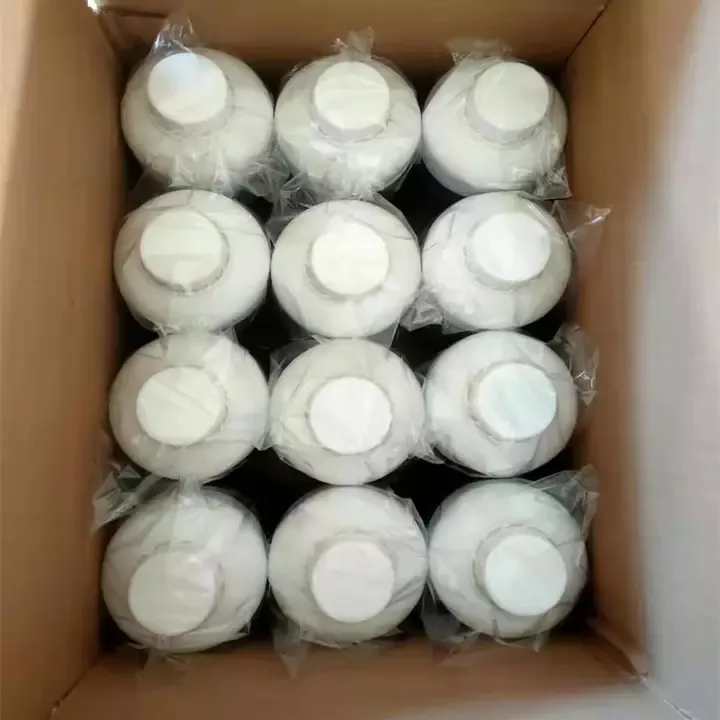In terms of quality control in swimming pools, chemicals play an extremely important role. Besides disinfection and algae removal, they can also regulate the pH level of the water, making it clearer. Even though chlorine and clarifiers are indispensable substances in water treatment, they should be applied with extra caution due to their chemical properties. If mishandled during the sterilization process, it can not only cause chemical changes but also affect the disinfection efficiency and potentially produce harmful substances. Thus, we will discuss whether chlorine can be added together with clarifiers, as well as their safe application, to ensure the cleanliness and safety of pool water.

I. The Role and Guidelines for Chlorine Use
- The Chemical Properties and Disinfection Action of Chlorine
- Effective disinfectant, quickly kills bacteria, viruses, and algae in pools, and prevents their proliferation. Its action on Bacillus spores might involve damaging the cell walls, affecting their metabolism. Upon adding chlorine to water, it quickly reacts to produce hypochlorous acid and chlorine, with hypochlorite salts having strong antibacterial and antialgal effects. However, chlorine is very reactive and can easily react with other materials, so caution is necessary during its application.
- How to Accurately Measure and Add Chlorine
- To ensure pool water safety, regular chlorine content tests are necessary, with appropriate chlorine additions as needed. Chlorine content typically involves two indices: free chlorine and total chlorine. Free chlorine is not reacting with other substances in water, offering the strongest disinfecting power; total chlorine includes all forms of chlorine in the water. Ideally, free chlorine levels should be maintained at 1-3 ppm and below 3 ppm.
- Discussion on the Best Time and Conditions for Adding Chlorine
- The best time to add chlorine is generally in the evening or at night since direct sunlight doesn’t immediately decompose chlorine, ensuring disinfection effectiveness. Additionally, to ensure even dispersion of chlorine in water, it’s recommended to turn on the pool’s circulation system before and after adding chlorine. The water’s pH level also affects chlorine disinfection; the ideal pH is 7.2-7.6. If the pH is too high or too low, a pH adjuster is needed to maximize disinfection efficiency. Furthermore, frequent pool use and external environmental factors (such as temperature, rainfall, etc.) can affect the chlorine depletion rate in water. Therefore, regular monitoring and timely chlorine additions based on actual conditions are necessary.
II. The Role and Guidelines for Clarifiers Use
- Describing the Chemical Properties and Mechanism of Action of Clarifiers
- Clarifiers are generally high-polymer materials or other chemical products used to aggregate fine particles like algae, bacteria, and sediments in pool water. These tiny particles are often too small to be directly filtered out, causing water turbidity. Clarifiers can increase water transparency by aggregating these small particles into larger ones, large enough to be captured and removed by the filtration system.
- How to Correctly Use Clarifiers
- When using clarifiers, ensure the balanced pH level and other chemical substances to guarantee effectiveness. Pour the clarifier liquid into the pool, then turn on the circulation device to ensure even dispersion. After clarification, it takes a few hours to a day to take effect.
- Discussion on the Best Time and Conditions for Adding Clarifiers
- The best time to add clarifiers is generally when the water becomes turbid or after a series of disinfection or cleaning works. This is because at this time, the quantity of fine particles in water is the highest, so clarifiers can achieve the best results. Before adding the clarifier liquid, thoroughly check the water quality to ensure its pH value and other chemical components meet the standards. Additionally, water temperature also affects the action of clarifiers; generally, the higher the water temperature, the greater the effect of clarifiers. Clarifiers cannot replace traditional filtration and disinfection processes; they only assist in improving water clarity. Therefore, besides using clarifiers, ensure the pool’s filtration system is functioning properly, and perform regular cleaning and maintenance.
III. The Possibility of Using Chlorine and Clarifiers Together
Typically, chlorine and clarifiers are compatible. However, using clarifiers can temporarily affect chlorine content in water. This is because when clarifiers coagulate fine particles, they also coagulate a portion of the free chlorine, temporarily reducing its concentration in the water. Therefore, during and after cleaning, closely monitor the water’s chlorine content and add chlorine as necessary to ensure water safety.
The greatest advantage of using chlorine and clarifiers together is that they not only ensure water safety but also improve water transparency, creating a comfortable and clean swimming environment. Chlorine disinfects bacteria and algae, ensuring drinking water safety; clarifiers aggregate fine particles, improving water quality. Combining both ensures more comprehensive and effective pool maintenance.
IV. Considerations When Using Both Together
Understanding Their Interactions
Clarifiers can increase chlorine consumption since they aggregate fine particles, including microbial residues killed by chlorine. Since adding chlorine and clarifiers affects the water’s pH, adjust it appropriately before and after adding chemicals.
Precautions
Add Gradually
Don’t add too much chlorine or clarifiers at once. Add them step by step, and conduct water quality monitoring after each addition.
Monitor and Adjust
Continue to closely monitor chlorine content and other relevant water quality indicators after adding chlorine and clarifiers, making adjustments as necessary.
Document and Evaluate
Record the time, dosage, and water quality test results for each chemical addition to better evaluate their impact and make more precise adjustments in the future.
In summary, using chlorine and clarifiers together can not only effectively disinfect pool water but also improve its clarity. However, considering their chemical properties, ensure their safe and appropriate use through regular monitoring and adjustments, achieving a safe, comfortable, and crystal-clear swimming environment.
 Instant
Quote
Instant
Quote Email
Us
Email
Us